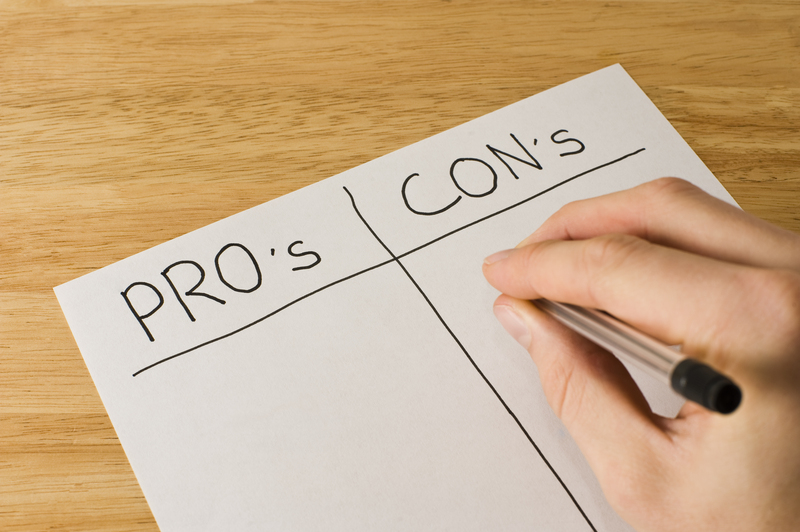Seamless Strategies for Relocating Your Bed and Mattress
Posted on 08/06/2025
Seamless Strategies for Relocating Your Bed and Mattress
Moving to a new home is an exciting milestone, but relocating your bed and mattress can turn into a real headache if you're not well-prepared. With the right tips and techniques, you can effortlessly transport your sleeping essentials, safeguard your investment, and ensure a good night's sleep in your new abode. This comprehensive guide covers everything you need to know about bed and mattress relocation--from planning and packing to loading and reassembly--so you can transition seamlessly and stress-free.

Why Proper Mattress and Bed Moving Matters
Most people underestimate the complexities involved in moving your bed and mattress. Without the right tools and knowledge, you risk damaging your furniture, injuring yourself, or even voiding your warranty. Mattresses can be awkward and heavy, while bed frames may be bulky and fragile. Therefore, employing seamless strategies for bed and mattress relocation ensures both your comfort and investment are fully protected.
Planning Your Move: Key Considerations
1. Assessing Your Furniture
- Type of Bed: Is it a platform, box spring, or metal frame?
- Mattress Size: Are you moving a twin, queen, king, or custom-sized mattress?
- Condition: Check for any pre-existing damage to document for warranty or moving insurance purposes.
- Disassembly Requirements: Does your bed need to be taken apart, and if so, what tools are necessary?
2. Supplies and Tools Needed
Before relocating your bed and mattress, assemble these essential moving supplies:
- Mattress bag or cover: Defends against dust, dirt, and damage.
- Moving blankets: Provides extra padding for frames and headboards.
- Furniture dolly or hand truck: Reduces lifting strain and eases navigation through tight spaces.
- Ratchet straps or bungee cords: Keeps pieces secure in the moving vehicle.
- Basic toolkit: Usually needed for disassembling bed frames.
- Plastic bags and labels: Stores screws, bolts, and small parts and keeps everything organized.
Step-by-Step Guide to Relocating Your Bed and Mattress
1. Disassemble the Bed Frame
Start by stripping the bed of all linens, pillows, and accessories. Next, carefully follow these steps:
- Remove the mattress and box spring: Place both in protective covers to prevent stains and tears.
- Take apart the bed frame: Begin with the headboard and footboard, then detach side rails and slats, if applicable.
- Secure all hardware: Place screws, bolts, and washers in a labeled plastic bag and tape it securely to one of the larger frame pieces.
- Wrap delicate components: Encase ornate headboards, footboards, or glass in moving blankets and secure with packing tape or plastic wrap.
*Tip: Take photos while disassembling to simplify reassembly later.
2. Prepare the Mattress for Safe Transport
Handling and moving a mattress involves several precautions:
- Slide the protected mattress into a mattress bag. Ensure it's fully sealed to block moisture and debris.
- Stand the mattress upright for easier maneuvering. Be careful not to bend or fold, especially if you're moving a memory foam or hybrid mattress, as this can cause permanent damage.
- Use a dolly where possible. Mattresses are unwieldy--not necessarily heavy, but awkward. With a helping hand and a moving dolly, you can navigate stairs or long hallways much more easily.
3. Loading and Transporting Your Bed and Mattress
- Clear a path. Remove trip hazards from your old and new homes to prevent accidents during the move.
- Lift safely. Use your legs, not your back, and encourage teamwork for heavier or oversized pieces.
- Load strategically. Place bed frames and headboards at the sides of the moving truck, secured by straps. Stand mattresses on their side at the edge of the truck for support.
- Avoid stacking. Heavy objects on top of your mattress or frame can lead to unsightly dents and breakage.
- Secure with straps. Prevent shifting and sliding with ratchet straps or bungee cords.
Specialized Strategies for Different Types of Beds and Mattresses
Memory Foam and Hybrid Mattress Moving Techniques
Memory foam and hybrid mattresses require extra care during relocation. Never bend or roll these mattress types excessively, as it can compromise their structural integrity. Use a supportive mattress bag and keep the mattress upright for most of the move. If bends are necessary to fit through doorways or into elevators, do so gently and briefly.
Moving Adjustable and Platform Beds
- Adjustable beds: Unplug all cords, remove electronics and batteries, and wrap motorized bases in substantial padding. Consult your user manual for manufacturer-recommended moving instructions.
- Platform beds: Typically consist of fewer, larger panels. Ensure they are adequately wrapped to prevent dings during transport.
Relocating Antique or Custom-Fitted Bed Frames
- Document the frame's layout with photos.
- Use sturdy, padded wrapping.
- Label all hardware and parts with great care.
Professional Mattress and Bed Moving Services: When to Hire Help
Sometimes DIY mattress relocation isn't practical, especially with king-sized beds, multiple flights of stairs, or sensitive antiques. Consider professional movers if:
- You lack the manpower for safe lifting.
- You have intricate or heavy frames.
- You want insurance against damage or loss.
- Your mattress type requires specialized handling or transport.
Hiring professionals not only saves your back--it can preserve your bed's warranty and spare you costly mistakes.
Common Bed and Mattress Moving Mistakes to Avoid
- Skipping the protective cover. Never move a mattress without wrapping it; even small tears can void a warranty.
- Misplacing hardware. Always store small parts in labeled containers and tape to frame components.
- Incorrect loading. Do not place heavy objects on top of beds or mattresses in the moving truck.
- Lifting without help. Most mattresses require at least two people to maneuver safely.
- Improper reassembly. Refer to manufacturer instructions and your disassembly photos for best results.
Setting Up Your Bed and Mattress at the New Home
Once you've arrived, your goal is to reassemble quickly for a restful first night. Here is how to proceed:
- Unpack all tools and hardware first. Lay out labeled bags and tools needed for assembly.
- Reconstruct the frame according to your photos and manufacturer instructions.
- Install the mattress last. Once the frame is secure, set the mattress in place and remove the protective cover for fresh air circulation.
- Test for stability and comfort.
Mattress Storage During Relocation: Best Practices
If your move involves a storage period, follow these *storage tips for mattresses and beds*:
- Store flat, not upright. Prolonged upright storage can cause mattress sagging over time.
- Keep covered. Maintain a sealed, protective bag for the duration of storage.
- Control the environment. Climate-controlled storage units prevent mold, mildew, and material breakdown.
- Keep off the floor. Place on a pallet or tarp to avoid contact with dust or damp.
Eco-Friendly Mattress and Bed Relocation Tips
- Reuse moving supplies--like blankets and straps-- for a more sustainable move.
- Donate or recycle old mattresses and bed frames instead of sending them to landfill.
- Opt for biodegradable mattress bags if available.
- Use digital instructions instead of printing multiple pages for assembly guidance.

Frequently Asked Questions About Bed and Mattress Moving
Can I fold my mattress to fit it in my car?
Generally, no. Most mattresses, especially hybrids, foams, and innersprings, should not be folded. Only some latex foam or thin memory foam mattresses are designed to be flexible. When in doubt, refer to your manufacturer's guidelines.
Do moving companies transport beds and mattresses?
Yes, most professional moving companies specialize in seamless bed and mattress relocation. They offer the right packing materials, muscle power, and secure transportation. For high-value or antique beds, inform your mover ahead of time to ensure proper care.
Is it worth moving an old mattress?
If your mattress is 7-10 years old or showing signs of wear (sags, lumps, or loss of support), it may be best to replace it at your new residence. Save space and money by responsibly disposing or recycling the old mattress before your move.
Final Thoughts: Enjoy a Seamless Bed and Mattress Relocation
Relocating your bed and mattress doesn't have to be a stressful process. With thorough preparation, the right tools, and systematic organization, you'll protect your investment and ensure comfort from your very first night in your new home. By utilizing these seamless strategies for relocating your bed and mattress, you can enjoy an efficient move and rest easy knowing every detail is covered.
Remember: Prioritize protection, plan ahead, and don't hesitate to hire professionals if your bed or mattress requires extra care. A seamless move is the foundation for sweet dreams and a fresh start in your new space!



